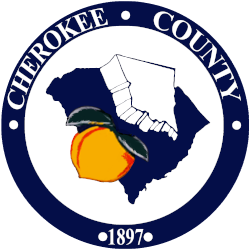From the Federal Highway Administration: Traffic Calming
See a Traffic Calming Demonstration in action here: St. Louis Plan4Health Traffic Calming Demonstrations
(Source: Trailnet, Missouri Chapter of American Planning Association, and the HEAL Partnership)
Fill out a Traffic Calming Application here.
Our Process:
The Traffic Calming Study and Implementation Process in Cherokee County does not necessarily require an exhaustive series of traffic studies. The process strikes a balance between strict adherence to the wishes of a single neighborhood and strict reliance on textbooks and technical literature.
The main components of our traffic calming program incorporates the following:
- Public participation
- Identification of problem or issue that is appropriate for traffic calming
- Quantification of problem or issue to be resolved
- Development of traffic calming plan
- Approval of plan
- Implementation of plan
- Evaluation (and refinement) of traffic calming plan
The data that we will compile on the requested street to determine approval for the program as well as data we compile if approved for the traffic calming study/road safety audit will consist of the following:
- Roadway functional classification – such as local residential street, collector street with predominantly residential uses, and arterial road with commercial
- Speed – posted speed, average speed and 85th percentile speed in each direction
- Vehicle volume – daily and with directional splits for peak hours
- Graphical representation of all traffic control devices in affected area, including signs, markings, and signals
- Description of physical characteristics of roadways in affected area, including width, pavement condition, sidewalks, crosswalks, bicycle facilities, curb and gutter versus shoulder
- Adjacent arterial streets – are mobility or safety problems on an arterial street contributing to the perceived local street problem or issue?
- Crash data – recent by type
- Parking – location and use
- Pedestrian activity – volume and origin-destination patterns
- Bicyclist activity – volume and origin-destination patterns
- Designated emergency response routes
- Transit routes and bus stops
- Locations of schools, parks, senior housing, medical services, and other unique trip generators
“This program is a special one to me, as most of my career has been spent performing road safety audits and working with communities to improve their overall safety on and around roadways. This includes the safety of drivers, children playing, walking, and biking in their neighborhoods, and adults and families on their evening strolls or bike rides. Working in transportation has given me the unfortunate experience of seeing too many unnecessary fatalities on our roadways, but it also has provided me with the drive to work towards finding ways to reduce and hopefully one day eliminate these terrible experiences of the residents I serve.” -Kristy Bradley, Assistant County Administrator
Phase 1 – Project Identification
This phase consists of a citizen, community, elected official, or government request to look at potential traffic calming on their street.
If approved, a petition will go out to ensure at least 75% of residents are supportive of a traffic calming study, and a meeting with the community will be conducted and problems will be identified.
A traffic calming study and road safety audit will commence, and recommendations will be provided back to the community regarding safety countermeasures.
If approved, this project will move into Phase II.
Phase 2 – Project Implementation
In this Phase, a final project scope will be completed and provided to the community. All adjacent properties to the specific traffic calming measures will be petitioned to ensure they are in support of the scope of this project.
Once funding is secured for the project, the implementation will move forward.
After completion, a separate study will be conducted to monitor the effectiveness of the safety countermeasures in place.
